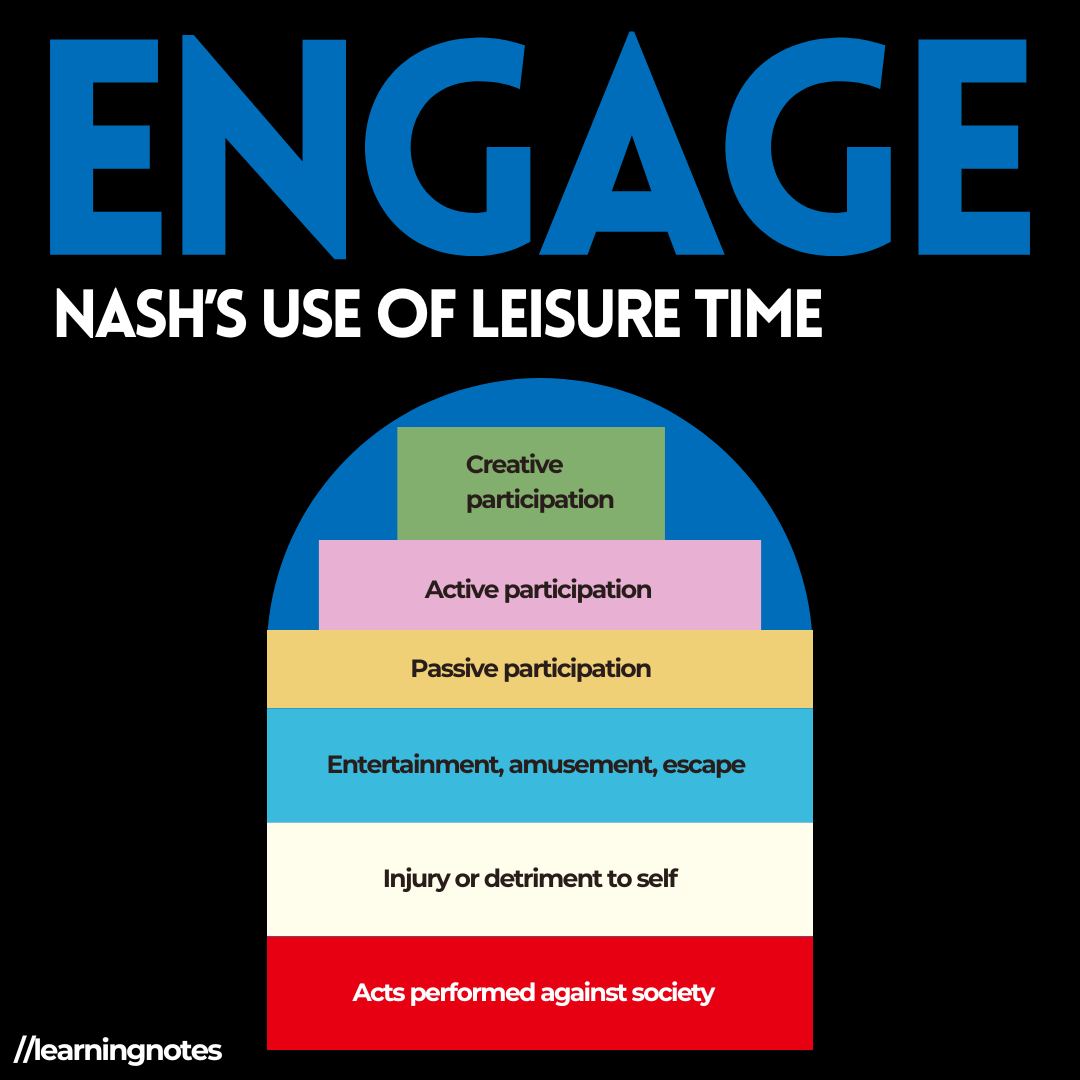
Many of us are lucky to have some leisure time. Maybe not much depending on our opportunities, seasons of life and many other factors (like having kids), but we mostly get some leisure time.
Well, Jay B. Nash, back in the early twentieth century, created a pyramid of use of leisure time.
Now, before we jump in, it's worth stating the obvious: this was created in a time that is very different today, but that doesn't mean there aren't nuggets of information and insights we can learn from.
There's also some fair criticism about the model; there is a lack of rigorous data to underpin it and it's fairly simplistic in it's design.
But, I read widely and I "crunch" ideas together with what I know, to create new paths for learning - and I found this idea particularly interesting. When I was reading about it, I can of felt a lot of self-reflection happening as I realised I spend too much time in the Escape section of the pyramid.
Here's a podcast. Learning notes, artwork and transcript are below.
"Here's an idea worth playing with" is a regular podcast (and post) where I share ideas to help you make the business better. Not all of the ideas will be right for you - hence, it's an idea worth playing with.
Some people get more leisure time than others. Some people maximise the use of their leisure time, maybe around the pillars of life, maybe just across a holistic mind, body and spirit. Some people have access, privilege, money, opportunities - and some people don't.
How we choose to use our leisure time is personal to us (assuming we don't invade the lives and privacy of others). And this is where models like Nash's "Leisure Time Pyramid" come in.
All models are wrong but some are more useful than others - and, despite its many flaws, Nash's model struck a chord with me.
Here is Nash's pyramid with my learning notes around it.
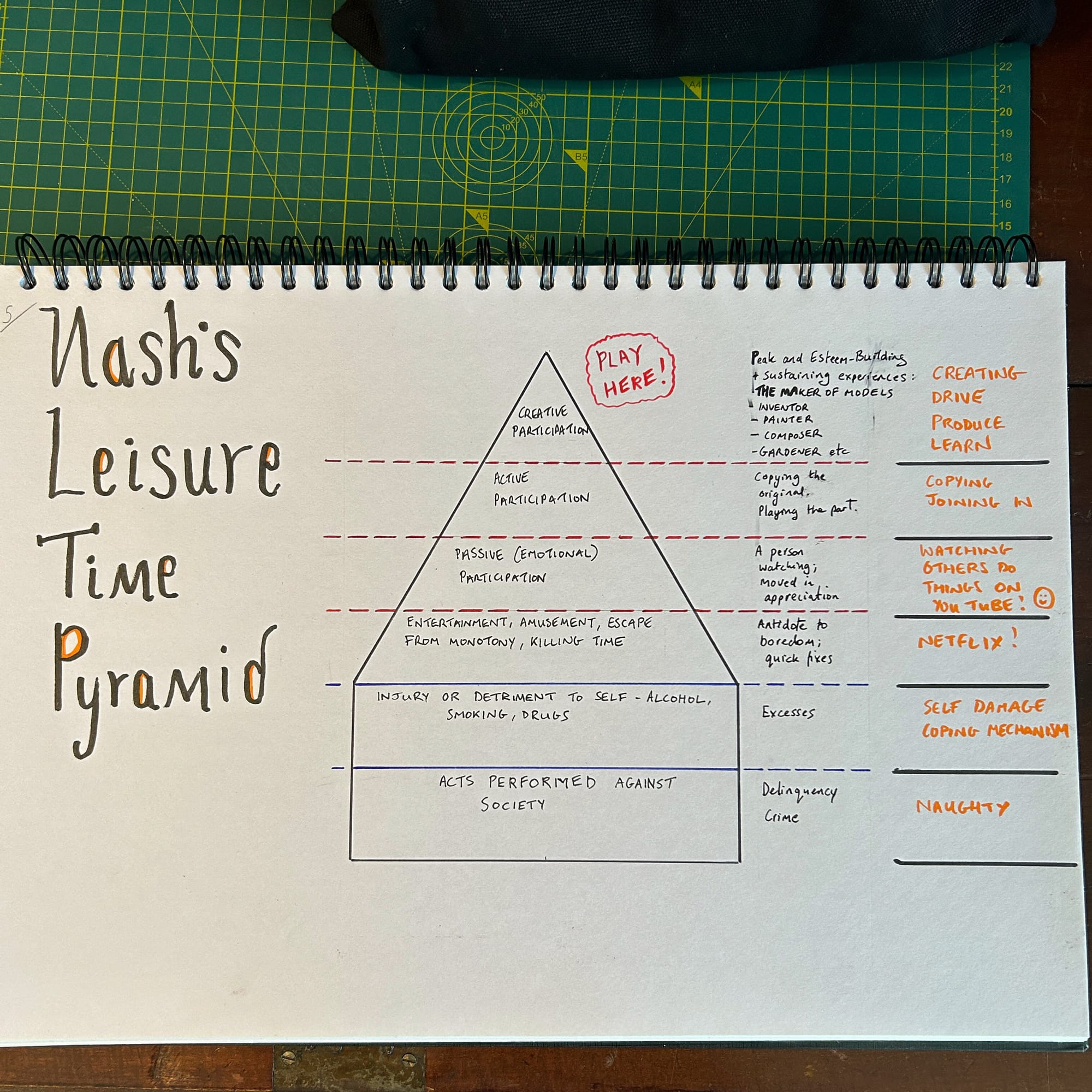
Nash's Use of Leisure Time
(Computer generated - edited after for typos and missing stuff)
Today, I'm gonna be talking about Nash's pyramid of leisure activities.
It's an old model. It's got some complications and it's got some criticisms but like all things here at Cultivated Management there's always a nugget of wisdom that we can learn from pretty much anything. That's the foundational thought that goes into much of my career, my work and hopefully the stuff that I share with you. We can learn from anything.
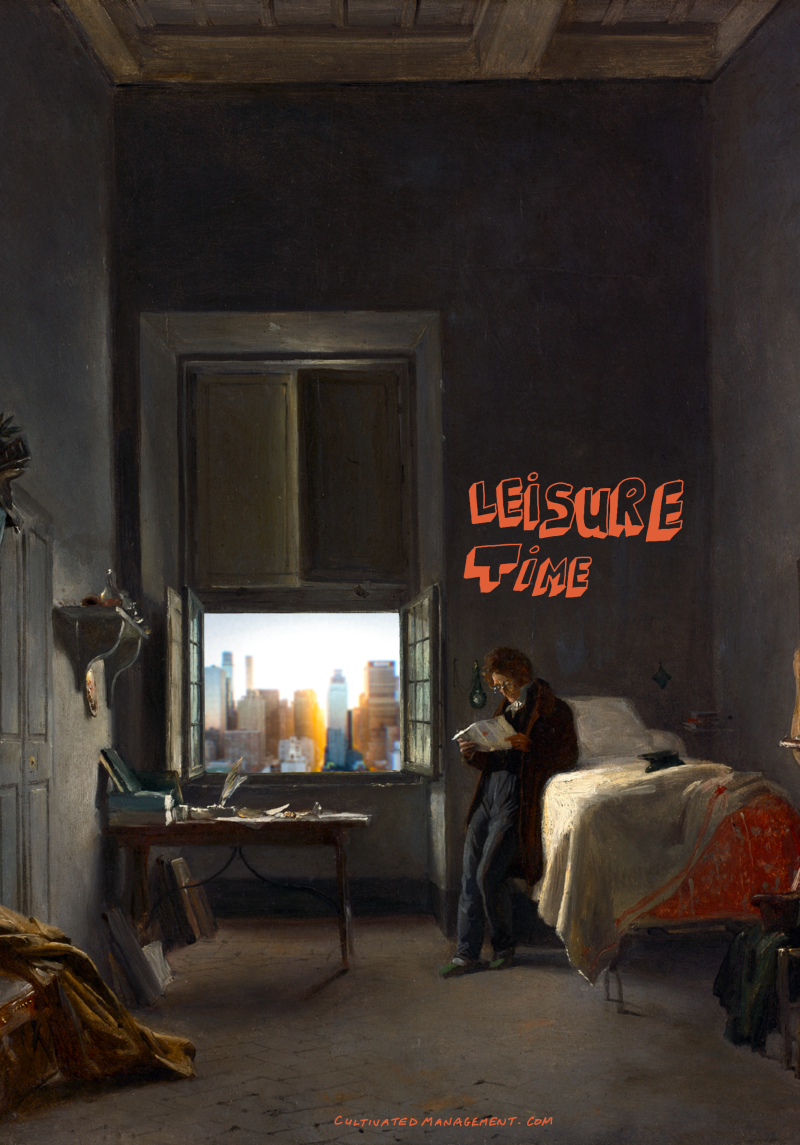
Now Nash's pyramid is an old one. We'll cover the pyramid itself and the essentially 6 different levels that sit within it.
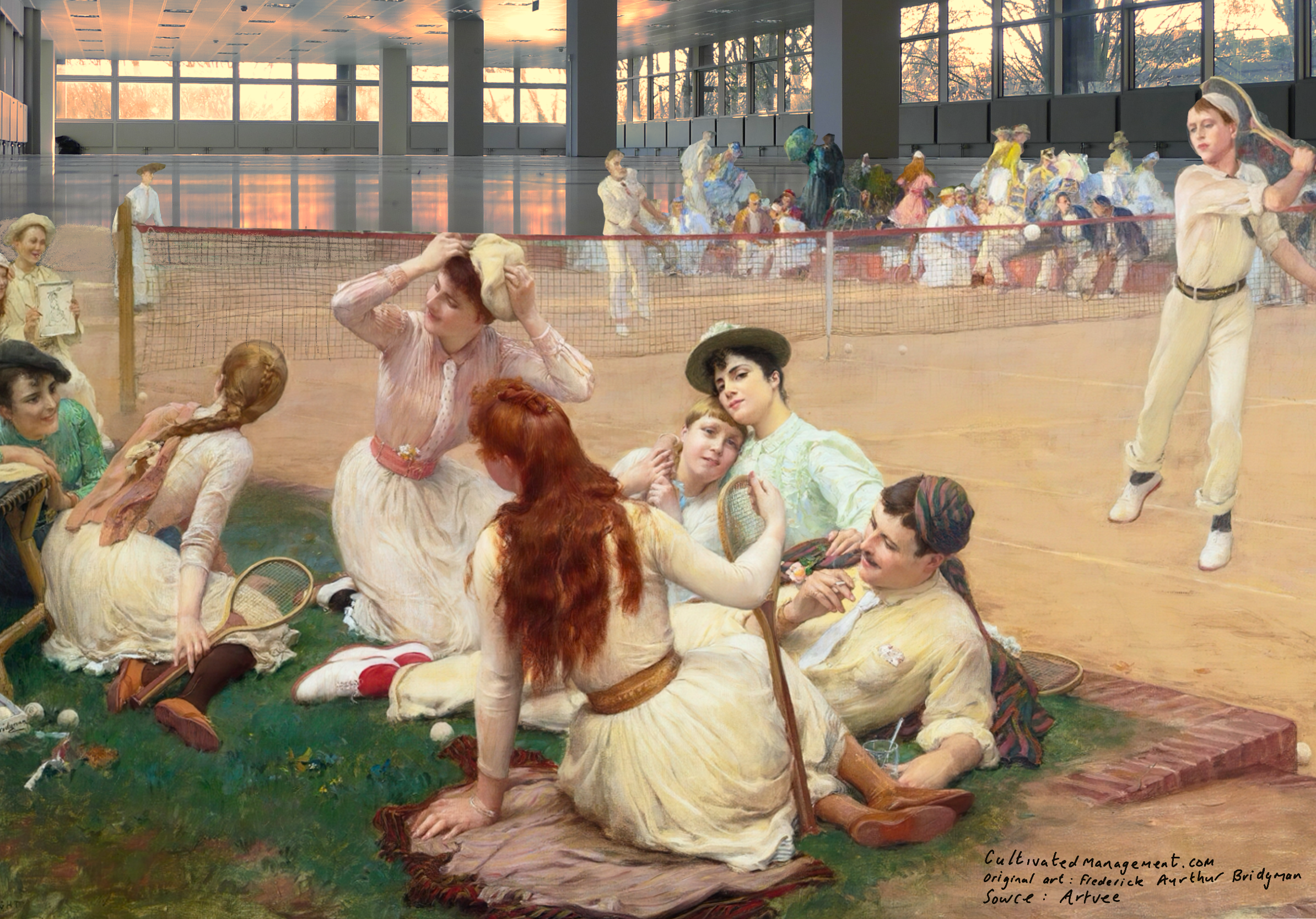
Now bear in mind this is a social construct, that we're gonna be talking about for society. But there's plenty that we can learn when we move this into the world of work. I'll talk about the Netflix challenge which was something that I encountered in one of my first consulting gigs and how that was detrimental to the business but also fits nicely into Nash's pyramid. Anyway, enough preamble, enough solo waffle, Let's get on with the show.
This was a pyramid that was designed by a gentleman called J B Nash. This was in about 19 twenties, I think. I can't find exactly the first time that this pyramid came to life so to speak. But I think it was in about 1920s. That's when it starts first being referenced.
J B Nash developed this as a way to think about society in a way that, you know, we could mobilise society to understand how society can get the best of their leisure time.
Now bear in mind, this was way back in the 1920s and we live in a very very different world now with the internet and phones. So actually I find this pyramid even more insightful now than maybe it was in the twenties.
We'll cover also some of the criticisms. So let me just take a moment to explain what the pyramid looks like. So if you imagine a straightforward triangle, the longest part of the triangle running, horizontally across the bottom and then obviously up to the peak on both sides. But sitting below the triangle is essentially a rectangle. There are 6 levels within this.
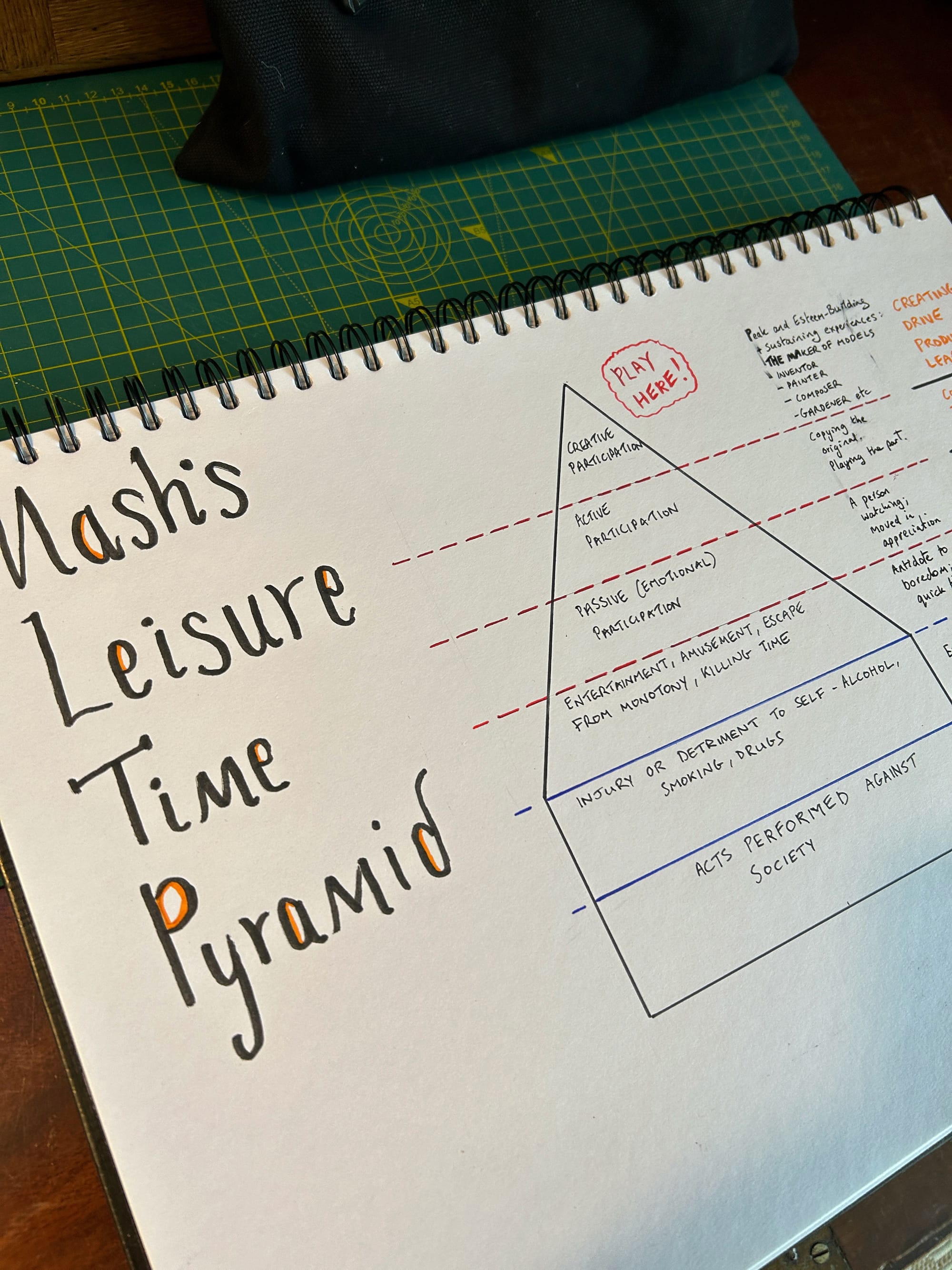
In the rectangle at the bottom below the pyramid there are 2. There's, subzero which is the very very bottom 1, then you've got zero.
Then you've got the bottom of the triangle starts forming, you've got the first level, then you've got another second, a third and a fourth.
Acts Performed Against Society
Nash called this level sub-zero.
In subzero, he describes this as acts performed against society. So think crime, delinquency, antisocial behaviour, that kind of stuff. Now these are below zero. These are the sort of almost the unwanted elements of leisure time.
This is the lowest level of the pyramid. It's a space that I labelled in my notes as "naughty". This is anti-social behaviour, crime, delinquency and general badness.
Let's not play here. However, in some workplaces, I have seen employees so disengaged and disenfranchised with work, that they are actively performing activities that are detrimental to the business.
Excess - Injury or Detriment to Self
So at zero he came up with this idea that you've got excesses.
Now this is essentially injury, it's detriment to yourself, I mean he describes alcohol, smoking, that kind of stuff. It's things that really aren't that good for you, you know, things that are detrimental to yourself.
At this level we're no longer doing damage to society or other people. Instead, we are doing damage to ourselves. Think drink and drugs, or living a really unhealthy lifestyle.
I see this in the workplace too - people who are so frazzled, burned out and stressed that they result to coping mechanisms. I worked in one company where the posh bar opened at 1pm and it was actively encouraged to drink all afternoon - at work!
So, sometimes it's not us, it's the environment we find ourselves in. Ultimately though, this level is all about behaviours that are detrimental to ourselves.
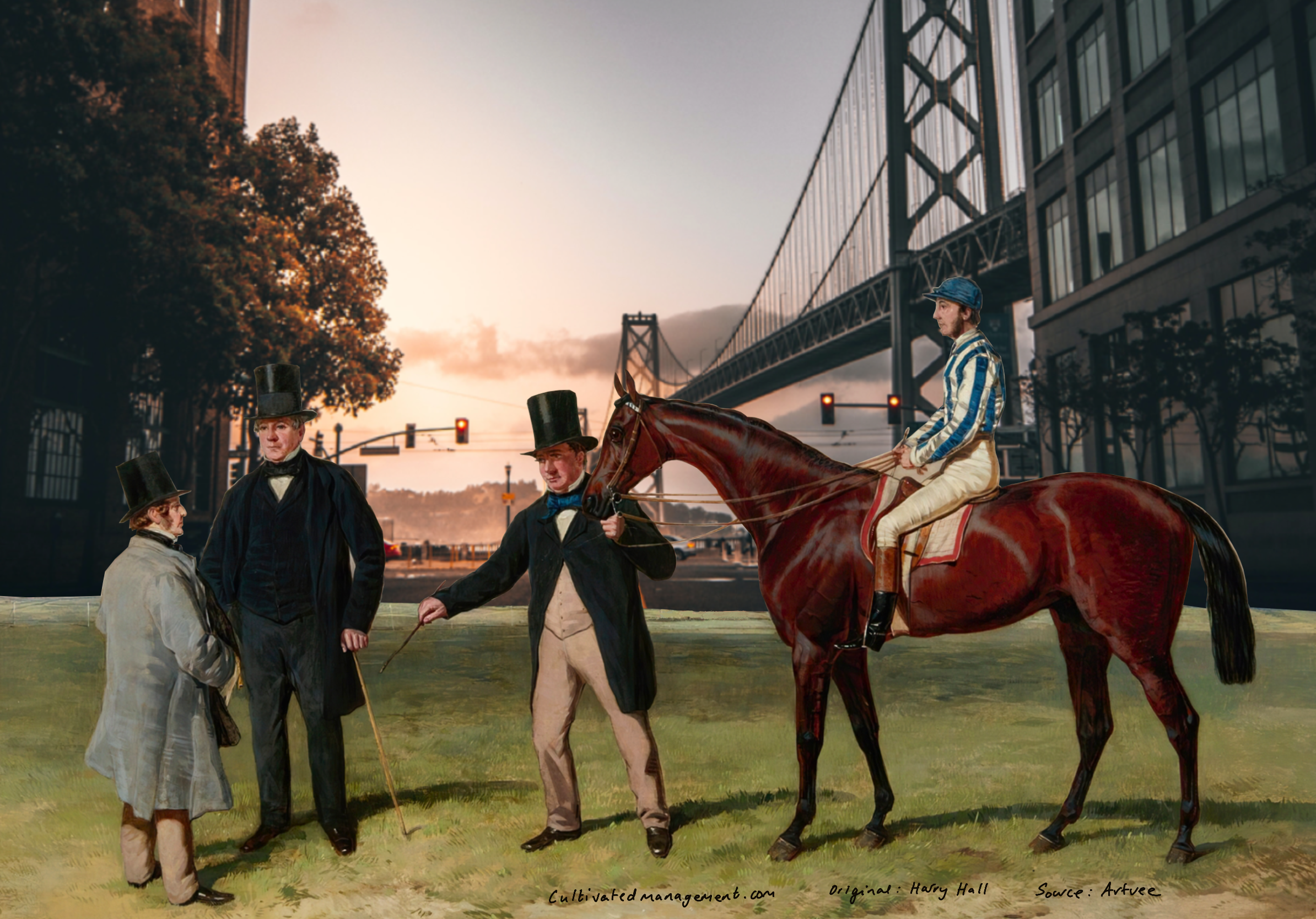
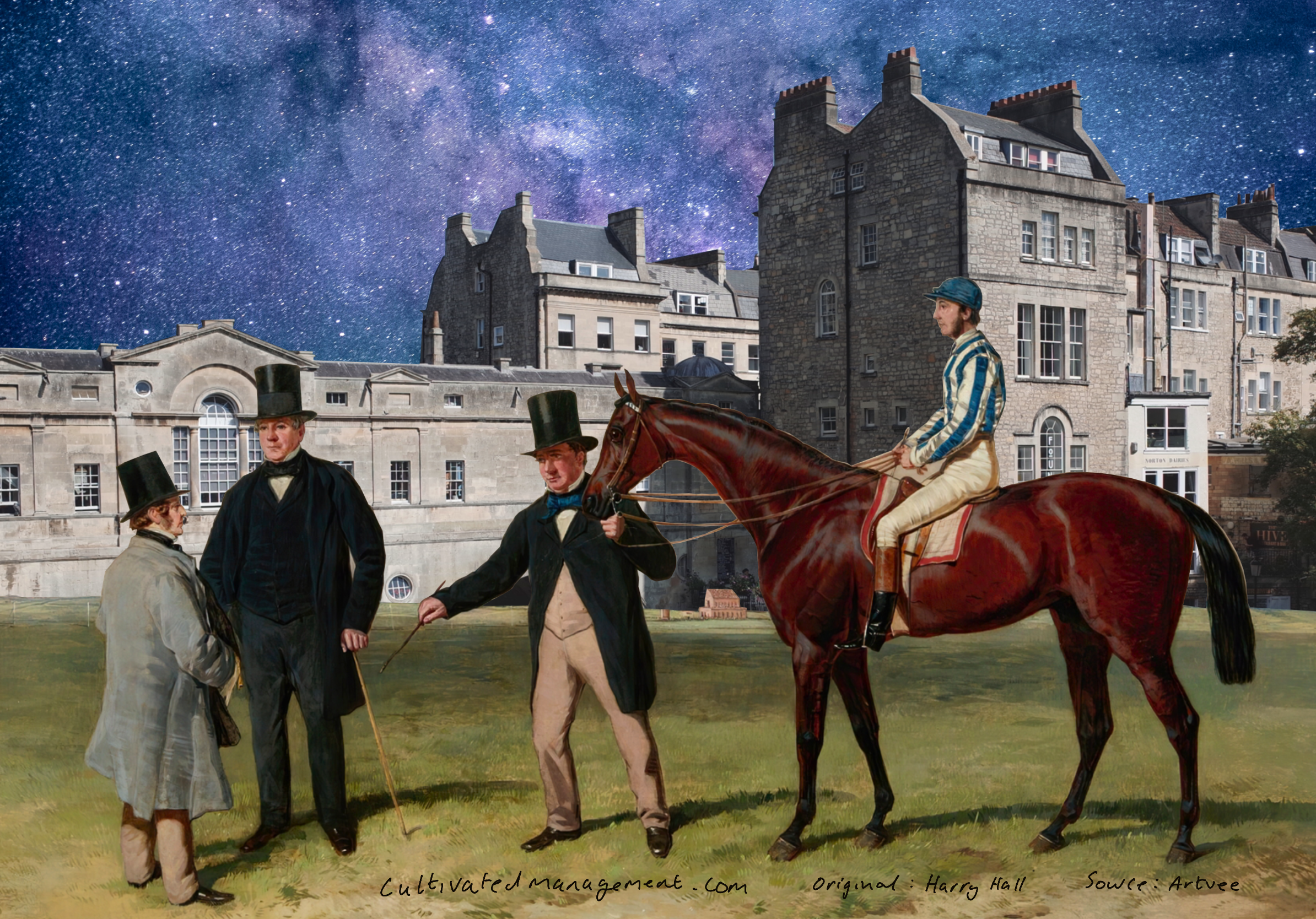
I couldn't decide which background looked better. The first with a cityscape, or the second with an image taken in Bath, England, which itself has star skies behind it. Original painting by Harry Hall on Artvee.
Entertainment, Amusement, Escape
I get stuck here every so often, sometimes for months on end. This is surfing Netflix, scrolling social media, wasting time, being distracted by meaningless activities that merely amuse.
It's a form of escape - something I fall in to when I lose sight of myself, my goals and my painted picture.
We all need escape some time though. I guess the question is how much of our valuable energy and attention are we spending here?
Passive Participation
This one is fascinating - and I get stuck here often too.
I love watching YouTube videos of experts at work. I have a particular fascination with videos that go behind the scenes in Japanese restaurants. An hour or two of nothing but filming a chef prepping food, cooking food and cleaning up. Or, there is a Korean YouTube channel I watch, that is nothing more than someone getting up at 4am and cooking and cleaning all day.
Or people that go camping and have all the gear. Or woodworking channels. Or videos of people building houses in the woods with natural materials and tools.
I love to watch presentations and videos about skills I'm trying to acquire.
In other words - we're passively participating in watching someone excel in what they do. We're moved to appreciation. We're impressed. We're passively engaged.
There's no active participation in this. I'm just passively consuming that content and I'm moved in appreciation. Now you could argue as well that this is sort of going to theatre, it's going to the cinema, it's going to watch a band.
And this is obviously a great use of leisure time, there's an opportunity to appreciate and I guess really study and observe somebody. There's a sort of passive consumption involved in this. It's a valuable use of leisure time.
And according to Nash that sits higher than, you know, the antidote to boredom, Netflix, watching TV, you know, doomscrolling, that kind of stuff.
Active Participation
At this level we're taking part in doing something of value. This is active participation where you're copying the original as he describes it.
We're maybe copying a model or way of working we've seen somewhere else. We're implementing something designed elsewhere. We're copying someone else - but we're actively engagement in it. We are actively participating in something of meaning and value.
There is plenty of merit here - it's what many people spend their time at work doing. We're part of a system of work - or we're implementing something that has worked somewhere else.
At this level we're talking about copying the original and playing the part.
This is where I might watch a Domestika video on how to do stop motion animation, which is what I'm interested in at the moment, then I make a stop motion animation.
I'm copying what's been told, and I'm doing it myself, and I'm creating something. It's not original, so to speak, because I'm sort of just following the process and I'm copying other people.
But it's useful. I'm getting something from it. There's something being created off the back of it.
Creative Participation
This is the high point - creating something that has not been done or been made before. We may be part of the creative process, or creating something ourselves.
This is direct participation in something novel, creative or new. It doesn't have to be grand - it could be working in your garden. You are directly participating in creating a beautiful garden.
Maybe you're writing a book, coming up with a new delivery model at work, making art, taking photos, creating a new company.
The key thing here is that you are using your brain, mind, energy, attention and focus to actively participate in making or doing something. You're not copying other people or along for the ride - you're engaged.
Isn't this what we all want from work - to be directly engaged in creating value or meaning?
This is people who are making the things that other people are watching and copying.
They're the inventors, they're the company founders, the painters, the composers, people in their garden, people building things.
They're not copying what everyone else is doing. They're not sat passively consuming. They're out doing something. There's a creative participation here.
This is where I hope to spend more time.
I want to make more books, more blog posts, grow my company, create new courses and shoot more film. I want to be engaged actively in bringing up my three sons, fixing our broken garden and creating more art.
These are all creative participation activities.
When you look at what Nash was trying to achieve with this model, he was, in a sense, articulating what US society at the time was struggling.
With society shifting and changing, and an introduction of different communication mediums, and different ways to waste your time, so to speak, his argument was that we want be moving up that pyramid.
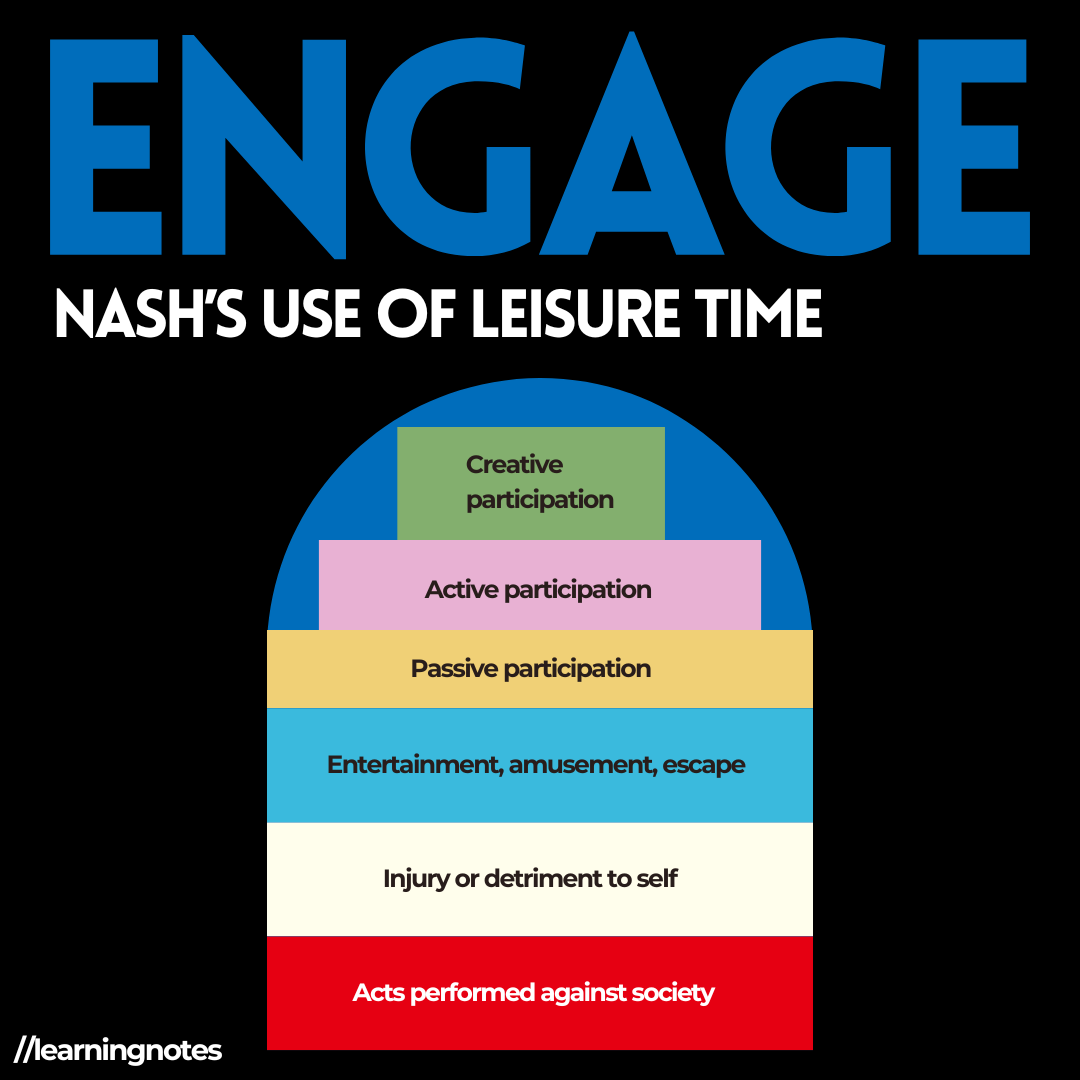
Summary
- Subzero: acts against society, delinquency crime.
- Zero: injury or detriment to yourself.
- Level 1: escape from monotony, killing time, scrolling.
- Level 2: passive participation, moved into appreciation by watching somebody else.
- Level 3: active participation, copying other people, playing the part
- Level 4: creative participation, making stuff
Let me tell you the story of the Netflix challenge.
The Netflix Challenge
I joined a company; a very, very big company. You will absolutely have heard of this organisation. I was brought in to coach a vice president of software engineering at the time.
After 3 days, I realised this guy's completely un-coachable. I mean, he was the reason why the business was not succeeding - let's put it that way. He got moved sideways and I took over. Great.
After a week of speaking to everyone in the team, I realised, and discovered, that about 50 percent of the software engineering team were playing "The Netflix challenge".
They were trying to watch as much Netflix as they possibly could, whilst working from home, and sometimes in the office, before anybody noticed and called them out on it. They'd been doing this for months.
When they should have been writing code, building software, creating products, working with others - they were essentially watching Netflix.
They had a leaderboard with the top 10 people who'd watched the most Netflix. They had a top 20 list of programmes watched too, along with ratings of the show. They captured how much time they spent watching shows, and when they were watching too.
It was actually quite impressive to be honest.
They'd introduced this because they were so disengaged, so utterly fed up and so utterly miserable at work.
It's no wonder work was not being shipped.
They were sick and tired of leadership not leading. They had no clarity over what they were doing, no alignment within the department and they felt undervalued.
Frankly, they were able to get away with it and there were no consequences for The Netflix Challenge - so they got carried away and just kept doing it.
Dealing with dysfunction - Nash's leisure time lens
Upon discovering this behaviour, I obviously put an end to this.
I didn't read them the riot act. In fact, actually, it was a very calm moment where I was like, no, I get it. I don't think it's very professional. Let's put it that way.
There was some direct and clear feedback there, but I said I understood why they did it, and how they'd been allowed to get away with it.
When we look at Nash's concept of leisure time, what they were doing was, essentially an escape from monotony. They were killing time. They were bored.
The Netflix challenge was a quick fix. They were at level 1 of the pyramid. They were burning their time watching Netflix.
But, when you look at that pyramid from the perspective of a company or somebody who might own a business, it was actually subzero. It was an act performed against the business.
It was a waste of business resources. They were getting paid to do something that they weren't doing and they were watching Netflix all day. It was an act performed against the business.
When I look at Nash's use of leisure time and I look at it in terms of the business, I see some interesting correlations.
Leisure time and the business lens
No matter how broken nor how much criticism some of these models might get, there are opportunities to learn from models like Nash's.
If we look at level 4, right at the very top, creative participation, you absolutely need people in the organisation who are inventing new ways of doing things. They are creating new products. They're creating new opportunities. They are creating new ways of working.
They are the maker of the model as Nash would call it. That's level 4. You need people in your organisation like that. But you can't fill the organisation with people exploring creative participation.
You need people at level 3 who are playing their part. They are taking what the inventors and the creative people at level 4 are doing, and they are actively participating in it.
They're copying the original, they're playing the part, they're part of this way of working, they are all contributing their skills and experience and behaviors to building the product, to getting the thing shipped, to marketing or whatever it is that your line of work is.
Level 2 is where it starts to get a bit sketchy and a little bit difficult to think about whether you'd want any of your company operating at this level. They're kind of moved in appreciation of watching somebody else.
One thing I always do when things are going well is take the process, behaviours and activities apart; deconstruct it and learn how to bring more of it to other parts of the organisation.
We point at it, shine a light on the people who are doing the good work, and we ask them to do demonstrations or talks about how they came up with this new way of working or this new product or this new thing.
By shining a light on good work, I'm hoping to trigger this passive emotional participation.
People are watching, they're learning, they're listening, and they're moved in appreciation. And by doing so they can take what they learn back into their world - and move to active participation or creative participation.
Level 1 (antidote to boredom) is rife in many organisations though. People killing time, wasting time, doing non-value add work because it's easy and keeping a low profile.
It's hard to believe but a lot of people are happy in work - because it's not taxing them in any way, or there's very little work to actually do.
The Blessing and White X-model of employee engagement is a good model to ponder - certainly around employee engagement. I'm not a fan of Employee Engagement surveys by the way. And here's one main reason why; in the Blessing and White model, there is a quadrant of people called Honeymooners.
Honeymooners are very happy and they are engaged. They like the culture, the vibe, the business, their managers and their work. Honeymooners score highly on employee engagement surveys. This all sounds awesome right? Well, kind of. Honeymooners though are engaged, but they're not adding value to the business.
If you rely solely on employee engagement surveys be careful because you might have people who are escaping from monotony by playing the Netflix challenge. They are deeply unhappy under the surface but they respond positively to surveys because they're comfortable with the lack of work. It could also be they are low performing team members, or they aren't thinking critically enough about the business - and a whole host of other reasons too.
If you can get away with doing a Netflix challenge (or playing video games all day), and there's no consequences for it, why would you rock the boat.
For some people it's a good use of their time. I personally don't understand it, but I see enough of it to realise it's rife.
So you have to be very very careful about those with employee engagement surveys. Instead, build relationships with your direct reports and get to know them. Find out what motivated them, what their strengths are and what would help them strive.
I don't believe people come to work to do nothing, to not deliver, to not grow, to shirk responsibility. I think these things are a symptom of weak management and a broken system of work.
The team doing the Netflix challenge scored highly on the Employee Engagement survey but underneath they were adding no business value, actively harming the organisation and deeply unhappy.
They were finding ways to avoid boredom and pass the time. They were feeling undervalued and there were no consequences for taking time out to watch Netflix.
How can you help people move through the pyramid of leisure time?
How can you help them do more active participation, actually showing up, turning up, doing less than the bare minimum in their job and their role?
How can you help them move into creative participation to make the business better, or do something differently, or create and innovate?
I like Nash's model. It's not perfect, nor true but I think it's interesting. There are lessons that we can pull across into work.
What could you pull from this model to help you learn how your employees, how your team, how you as an individual, are showing up to work? And is there anything you could do to move people through those different parts of the pyramid?
Rob..
